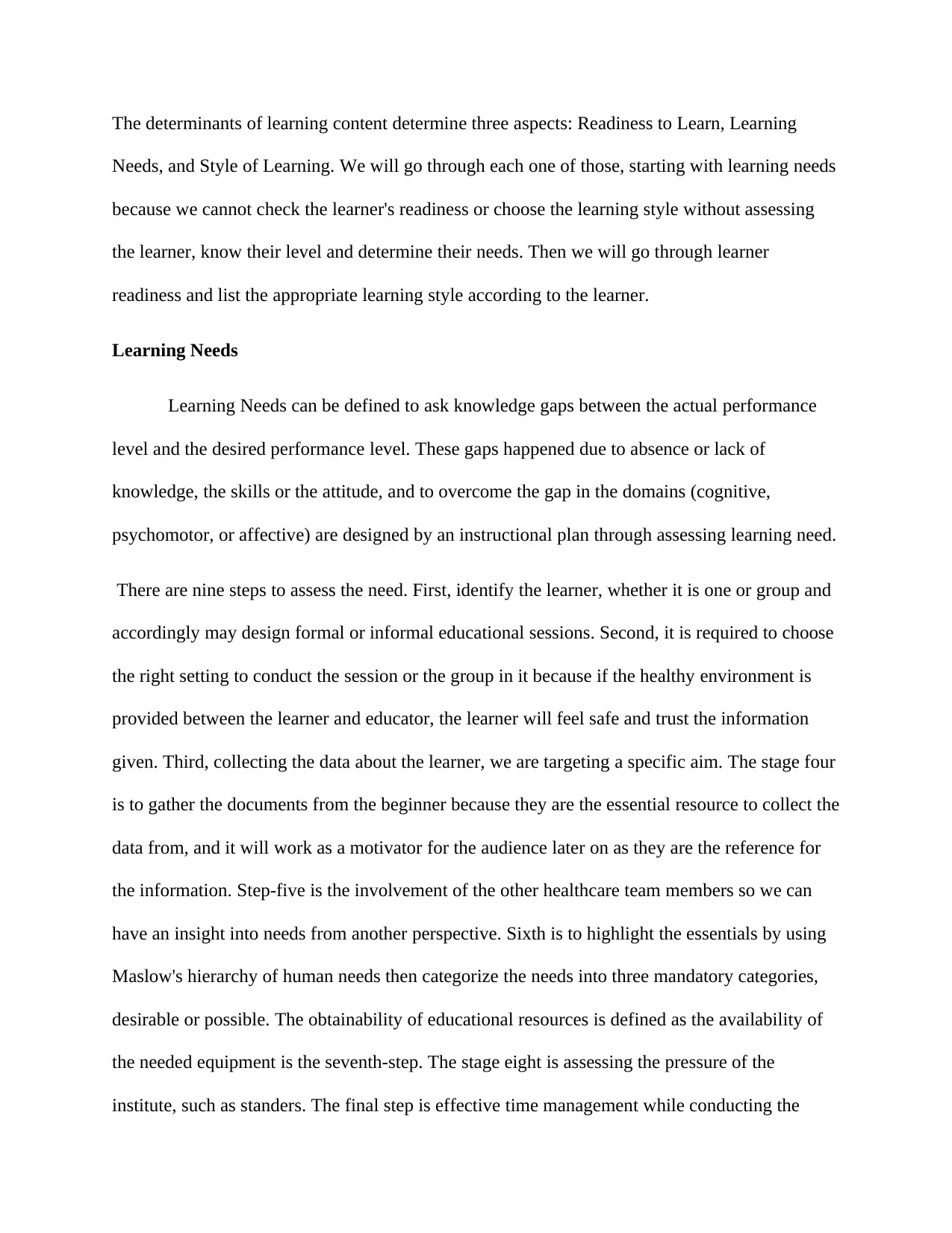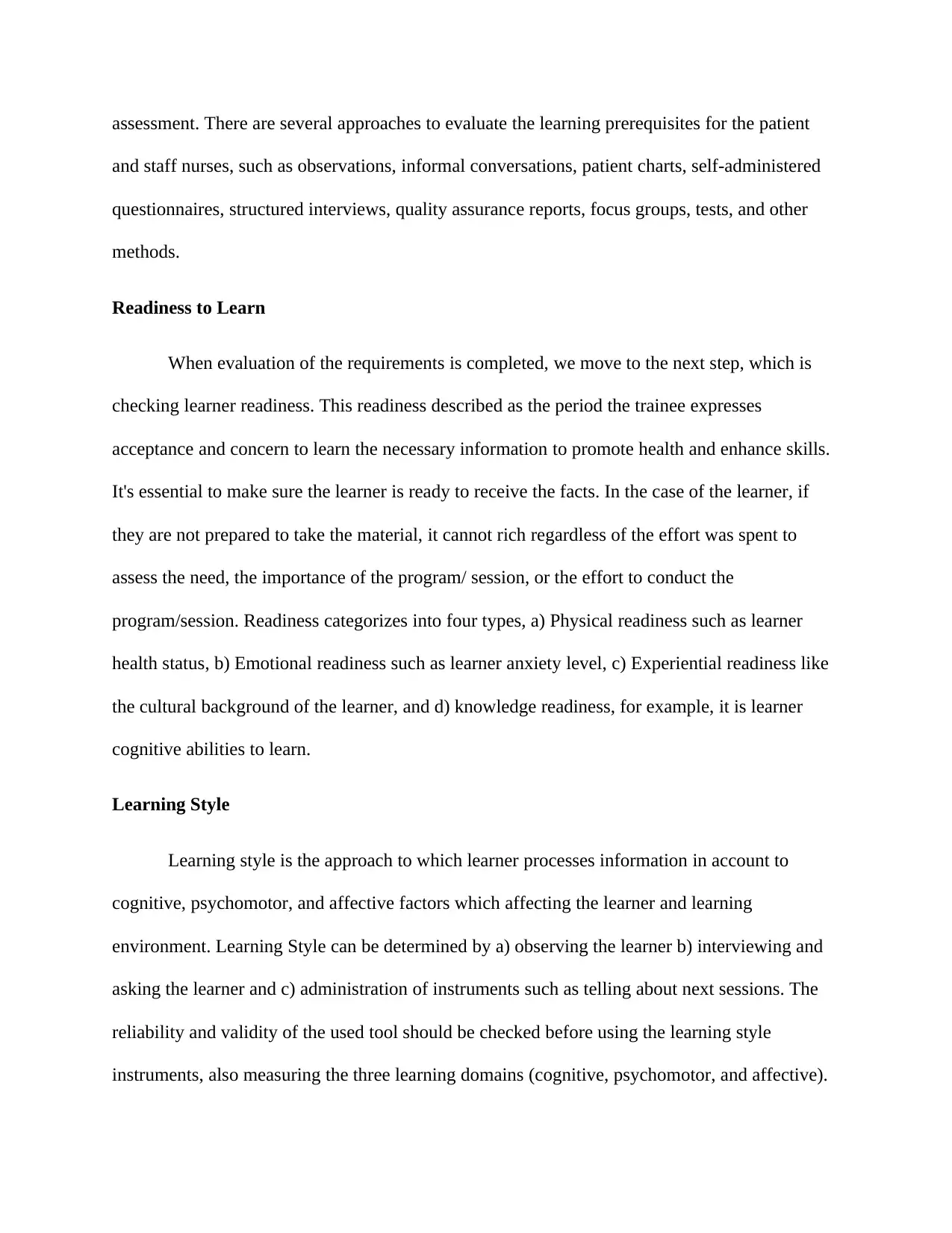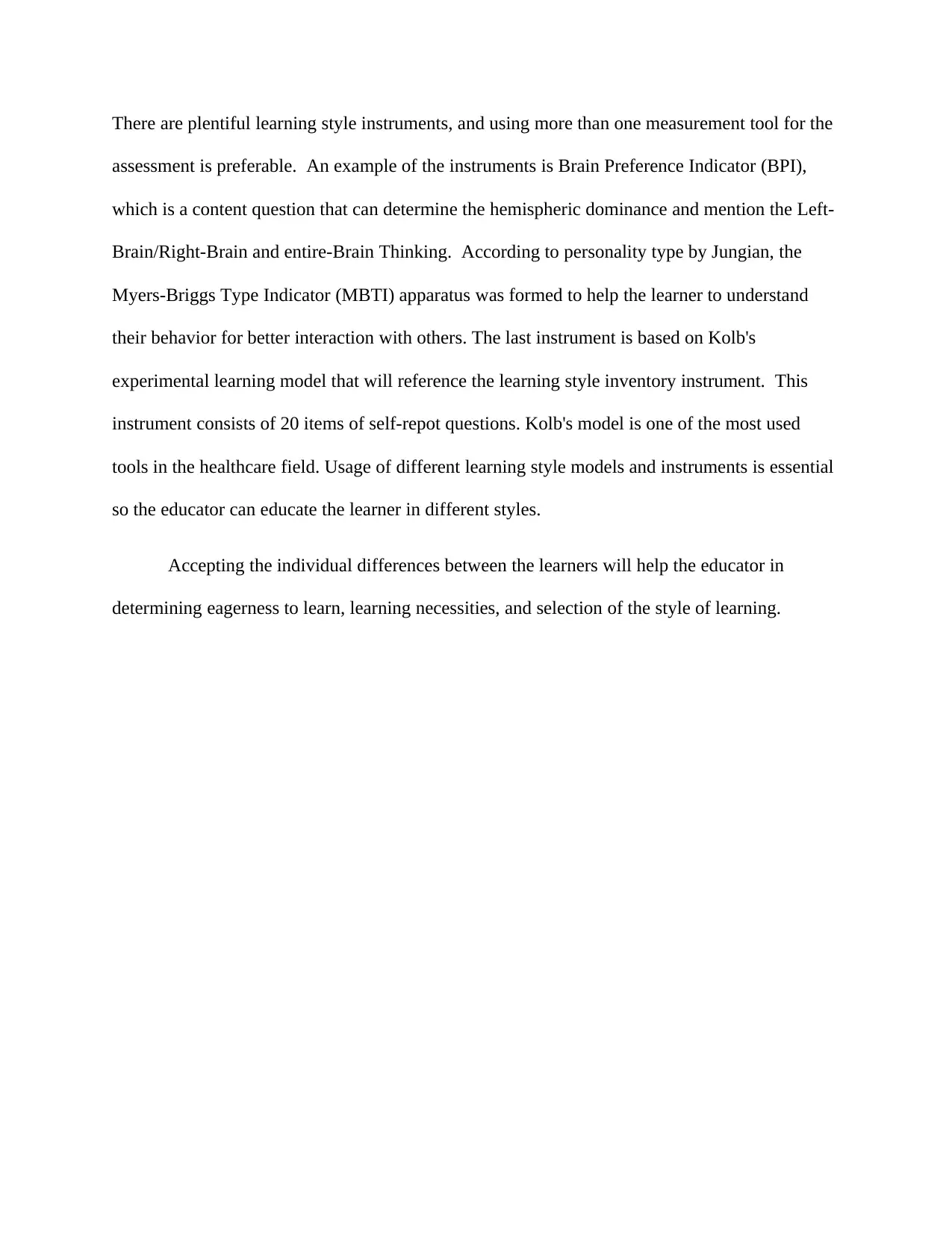Factors Influencing Learning: A Healthcare Report Analysis
VerifiedAdded on 2022/09/09
|3
|854
|22
Report
AI Summary
This report analyzes the key determinants of learning content, focusing on learning needs, readiness to learn, and learning styles within a healthcare context. It emphasizes the importance of assessing learners' knowledge gaps, considering their physical, emotional, experiential, and knowledge readiness, and tailoring educational approaches to suit their individual learning styles. The report outlines a nine-step process for assessing learning needs, including identifying learners, choosing the right setting, collecting data, and involving healthcare team members. It also discusses various methods for determining learning styles, such as observation, interviews, and the use of instruments like the Brain Preference Indicator and Myers-Briggs Type Indicator. The core message highlights the significance of recognizing individual differences to enhance the effectiveness of educational programs in healthcare settings. This report is a valuable resource for healthcare professionals and educators seeking to improve their instructional design and enhance learning outcomes. Access more study resources on Desklib.
1 out of 3










![[object Object]](/_next/static/media/star-bottom.7253800d.svg)